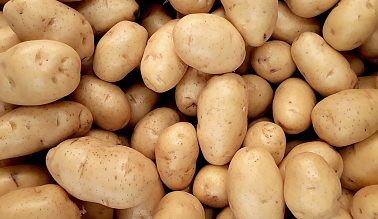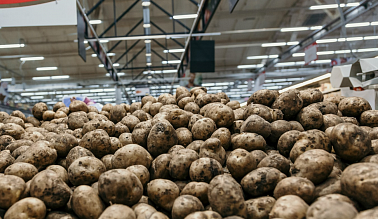Potato storage technology
23.03.2020 | Potatoes
There are different ways to store potatoes:
- Bulk storage;
- Container storage using "Aspiration System" technology.
- Container storage using the technology "Every Air" and many others, which you can also find on our website.
The choice of storage technology depends on many factors: from the type of vegetable storage building and the state of the potato harvest to the beginning of storage, the technological equipment of the storage and the financial capacity of the company that needs to store the harvest. Any technology involves creating and maintaining optimal microclimate conditions. The microclimate system must be automatic to ensure that the appropriate relative humidity and air temperature are maintained, and to remove excess CO2, which is bound to be generated by storing potatoes without the need for human presence.
Potato storage technology
Potato storage stages involve maintaining specific microclimate parameters - temperature and relative humidity for each stage. There are the following storage stages for seed and table potatoes:
- Therapeutic;
- Drying;
- Healing;
- Cooling;
Stamina and heating before unloading from the vegetable storage. In the process of harvesting potatoes, a specialized technique is used that can lead to damage to the tubers and partial destruction of the peel, which creates favorable conditions for the penetration and development of phytopathogenic organisms, which can lead to the potatoes to such dangerous diseases as dry and wet rot. Potato peeling can also cause loss of moisture in the root crop, reducing its original mass.
Damage healing occurs in the period from 8 to 10 days at a temperature not lower than +15 degrees and relative humidity (about 90-95%). But we would like to note that these conditions are suitable for tubers with a small degree of damage, and for heavily damaged harvest with traces of bacterial diseases, such conditions are strongly contraindicated, as they will cause an accelerated course of disease.
Healing should be accompanied by ventilation and drying of the tubers. The duration and intensity of this process depends on the quality of the crop, the humidity of the tubers and the temperature during harvesting. The dry surface of the tuber is necessary to maintain its normal condition. Bacterial and fungal diseases, in particular, can spread quickly on the wet surface of tubers, especially at high temperatures above +20 degrees.
Potatoes that come into storage must be dry. They should be harvested from dry soil and dried in the field. When moisture, namely water as a liquid, is present on the surface of the tubers, they should be dried as soon as possible after being loaded into the storage facility.
At this stage it is essential to check the condition of the tubers, everything is fine to the extent that excessive ventilation can cause loss of crop weight or dry rot. To ensure the necessary storage conditions for each stage, we strongly recommend the use of our company's meteorological equipment (humidity sensors). Monitoring the humidity level is a very important factor in the long-term storage of potatoes in a vegetable storage facility. Remember the simple rule: high humidity in a potato storage facility is good, but when liquid or condensation forms on the surface of the potatoes, bacterial rottenness is threatened, which spreads quickly enough and worsens the storage process.
After the healing stage, the potatoes need to be cooled to ensure proper long-term storage conditions. This is a very important period during which it is important to avoid significant temperature fluctuations in the product. Control of the product temperature is important to reduce respiration, evaporation and germination. Cooling should be done gradually until the temperature reaches +3 - +10 degrees.
The optimum storage temperature depends on the characteristics of the potato variety and its growth conditions. Seed and table potatoes should be stored at temperatures of 3-5 degrees, fries at 5-8 degrees, and potatoes for chips at 7-11 degrees.
In some cases it is difficult to predict the condition and quality of potato tubers, weather conditions, storage characteristics and other factors affecting storage. Automatically controlled microclimate systems are excellent at maintaining any preset parameters needed for a particular case. Maintaining temperature conditions, limiting water losses in tubers, controlling humidity and maintaining CO2, all this is done with the help of ventilation systems inside the vegetable storage.
The technological equipment of the potato storage facility should ensure the acceptance of the crop after harvesting and its processing. During the construction of a vegetable storage facility it is necessary to take into account the possibility of disinfection measures and create conditions for maximum automation of the process of loading and unloading of products.




